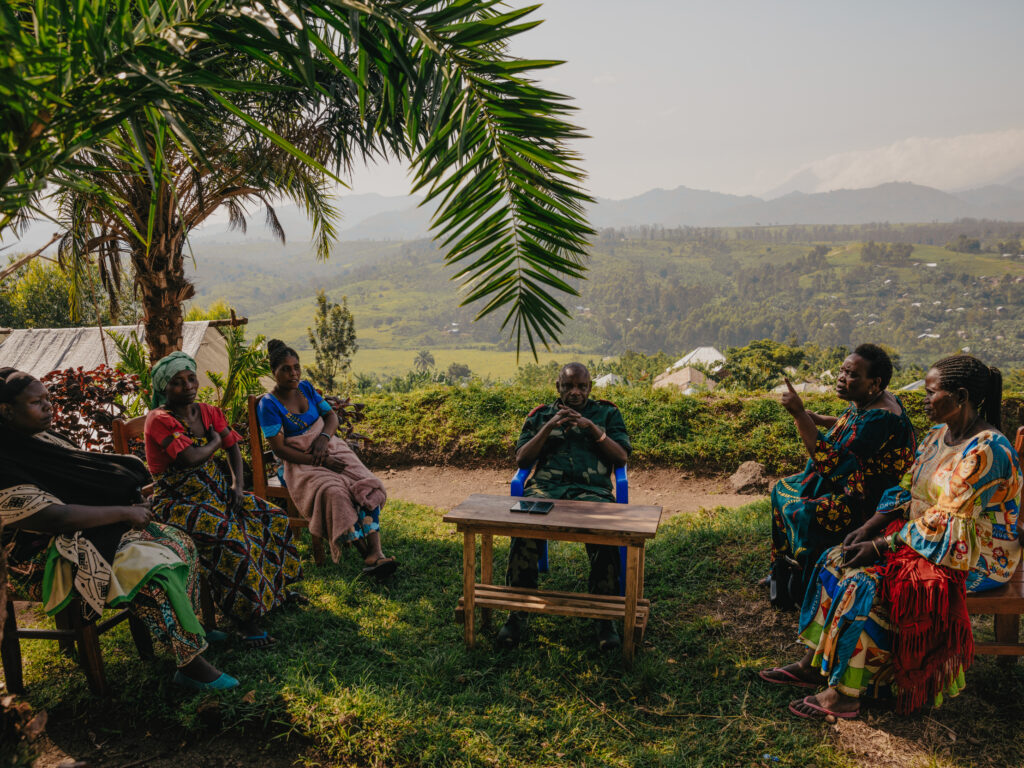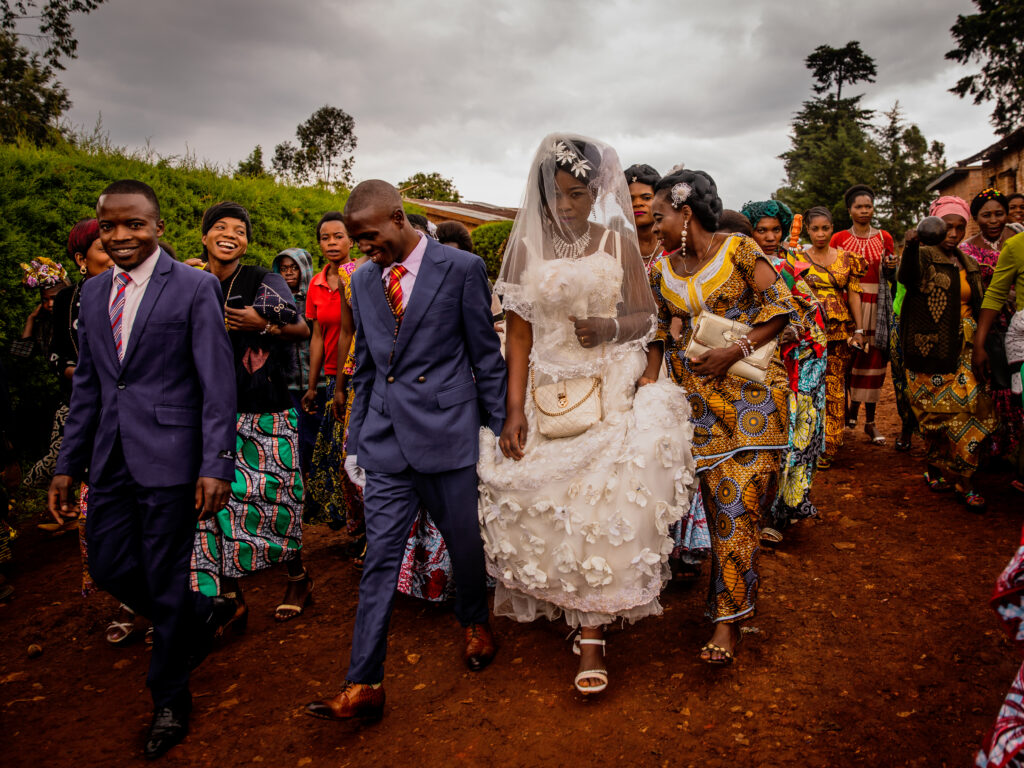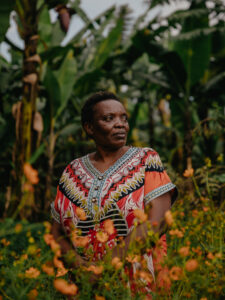Award-winning photographer Hugh Kinsella Cunningham has spent the past five years in the Democratic Republic of Congo, documenting how different communities have been impacted by the Ebola crisis, the illegal wildlife trade, record levels of human displacement, and the decades of conflict that intersect with everything else. In 2022 he was commissioned by National Geographic to photograph the work of women peace-builders in Congo, and his project won first prize in the documentary category of the Sony World Photography Awards 2023. The Visualising War Peace project has been collaborating with Hugh Kinsella Cunningham to shine a light on this often-overlooked conflict zone and to explore the impact that photography can have on how we understand peace and peace-building.

Photographs are world-building…
Our habits of visualising war and peace have a profound impact on how we approach and pursue both, and research on visual politics has shone important light on how world-building photography can be in this regard. Photographs don’t just reflect the world around us: they shape what we know, colour how we think, and impact how we feel. They focus our gaze towards certain events and people – and away from others. The perspectives they take frame our perceptions, direct the questions we might ask, and prompt particular emotional reactions. In both positive and negative ways, photographs – like many other kinds of storytelling – influence how we understand and interact with the world and with each other.
‘We live in a visual age. Images shape international events and our understandings of them. Photographs, cinema and television influence how we view and approach phenomena as diverse as war, humanitarian disasters, protest movements, financial crises and election campaigns. The dynamics of visual politics go well beyond traditional media outlets. Digital media, from Twitter to Instagram, play an increasingly important role across the political spectrum, from terrorist recruitment drives to social justice campaigns… This omnipresence of images is political and has changed fundamentally how we live and interact in today’s world.’
Roland Bleiker, The Power of Images in Global Politics: https://www.e-ir.info/2018/03/08/the-power-of-images-in-global-politics/
The study of ‘visual politics’ is important in alerting us not only to the impact that images can have on our own mindsets and behaviours but also on the political world at large. Widely shared images can impact voting patterns or trigger new protest movements; they can promote or undermine governmental policies and international strategy; and they can determine who is included and who is marginalised from future political decision-making. In doing so, they have a profound impact on individual lives: for example, on whether or not someone fleeing a war zone is met with hostility or hospitality; or on whether funding is released to mitigate the impacts of a humanitarian disaster, and to whom those limited resources get directed. Each image has the potential to become a political intervention.

Hugh Kinsella Cunningham: Rutshuru, Rutshuru Territory, North Kivu Province, DRC, May 31st 2022.
Can photographs be peace-building?
‘Moving the discursive focus from war to peace is a necessary precondition for the political move from war to peace.’
Frank Möller, Peace Photography 2019, 26
In his 2019 book Peace Photography, Frank Möller discusses the role that different kinds of photography have played in determining how we visualise and approach peace and peace-building. Noting the enduring influence of ‘war photography’, he argues that some photographic trends have obscured our view of the many different ways in which people make peace, even amid conflict; but he also points to photography’s capacity to reframe our vision of the world in ways that make peace and peace-building more visible and realisable. Peace photography can actively contribute to peace, Möller argues, by making it better understood and more tangible; and by pointing their lenses – and our gazes – towards the creative work of grassroots peace activists, photographers can harness more support for them at local, national and international levels.
This kind of photography involves careful ethical reflection. Particularly where victims of conflict are involved, photography can objectify, exploit and undermine; or it can humanise, support and empower.
‘For the last few decades, humanitarian campaign imagery has been dominated by stereotypical images of impoverished children, of mothers cradling their starving babies, and of boats overflowing with people seeking asylum. These visualisations are problematic because they represent people as passive, needy and devoid of the capacity to help themselves and their community.
In an industry-leading initiative, Australian Red Cross has moved away from such needs-based approaches, embracing, instead, strength-based photography that seeks to empower those depicted.’
Bleiker, R., Bratton, B. & Hutchison, E. (2023) ‘How do photos of our work make a difference’?, https://www.redcross.org.au/stories/2023/photo-research/
Ethical, empathetic and empowering representation is key to Hugh Kinsella Cunningham’s work. His photography treads a fine line between reflecting real threats and vulnerabilities and celebrating the strength and agency of the activists whose peace-building work he shines a thoughtful and caring light on.

Hugh Kinsella Cunningham.
Foregrounding Women Peace-Builders in the DRC

Through an exhibition of Hugh Kinsella Cunningham’s photographs, held at the Byre Theatre in St Andrews in June-July 2023, we have been asking important questions about what peace means to different people in different contexts; what sustainable peace-building involves; what impact women and other marginalised groups can have in peace-building processes; and what we can learn by picturing peace and peace-building from new perspectives.
You can browse a selection of photographs from the exhibition here. It showcases the courageous work of women fighting to restore peace in the Democratic Republic of Congo. Through a series of colourful images and portraits, Hugh Kinsella Cunningham documents the slow work of peace-building and the determination of women who advocate for human rights, justice and security in their conflict-affected communities. Each image has a story behind it; Hugh Kinsella Cunningham has worked with Camille Maubert and Sifa Bahati to gather first-hand testimony from women peace activists in Congo, and the photographs are intrinsically tied to the accompanying text. As Hugh notes in his reflections on peace photography, ‘this photography project is intended to create a history, both visual and oral, of war and peace in the Democratic Republic of Congo, across generations and across multiple cycles of conflict, told by those who know it best.’
‘Photographing peace is far more difficult than photographing conflict. Peace-building is inexorably a slow process of dialogue, agreement, with repeated failures, and yet more discussion. The dramatic moments of a frontline, with rifles held aloft, or panicked civilians are replaced with subtler details such as a wagging finger or eye contact between negotiators.
Power dynamics also reveal themselves in photos, with many images from this project showing activists with deferential body language in front of military officers. The fact that the meetings are even undertaken, and the willingness of these activists to put themselves in harm’s way, hint at the long and nuanced process of subverting this power dynamic.
Only a few of the activists I have been following for this project are associated with any international organisations or funding. The majority are unsung, and working directly with, and for, their communities. One of my aims is to record their work for posterity. The broader narrative of conflict is visually tied to publications publishing rapid fire images from news wires of displaced civilians. But narratives which emphasise urgency and action are blind to the slow work of peace. The successes of peacebuilders are neglected and their courageous actions have never truly been seen and applauded nationally or internationally.
The photos I have taken open up a world of tens of thousands of words worth of interviews and testimonies that explain the story of each activist, their beliefs and their intense experiences.’
Hugh Kinsella Cunningham
A pdf of our exhibition booklet is available below. We hope that it encourages visitors to reflect on individual and collective habits of visualising war and peace, and to look at peace-building from new perspectives. You can read more about war and peace reporting in Congo here, and we share some reflections about wider habits of visualising peace and peace-building – and the impact of images on local, national and global politics – in our ‘Picturing Peace‘ section on the project website. In collaboration with educational charity Never Such Innocence, we delivered some workshops for local schools, based around the photographs in the exhibition. You can read more about the workshops here and explore some of the poetry which participants wrote in response to what they saw.
What do you think?
- What impact do you think photography has had on how you understand or imagine peace and peace-building?
- Which of the photographs in our ‘Picturing Peace in the DRC’ exhibition do you particularly like, and why?
- Do some of the photographs evoke ‘peace’ or ‘peace-building’ in your mind more than others? If so, which ones – and why?
- Has this photography exhibition changed how you picture peace and peace-building in any way?
- What can it tell us about women’s involvement in peace-making?
- What new light does it shine on conflict in the Democratic Republic of Congo?
If you enjoyed this item in our museum…
You might also enjoy A Blank Newspaper, Visualising Peace after Forced Displacement, ‘Add Women and Stir‘ and Education: a force for sustainable peace.
Alice König, June 2023